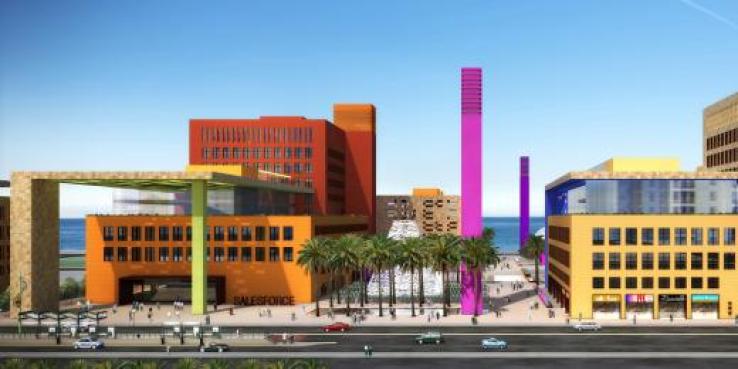On February 28, Salesforce announced its was suspending plans to build a 2-million-square-foot campus on the 14 acres it had acquired in San Francisco’s Mission Bay. Citing that it has grown faster than expected, the company will instead lease existing space two miles north, near Market Street in San Francisco’s Central Business District.
While the change of plans is certainly a temporary blow to Mission Bay, it can also be viewed as a reaffirmation of the importance of downtown San Francisco as a premier business location. In January, Salesforce signed an 18-year lease for 400,000 square feet at 50 Fremont Street. CEO Mark Beniof has publicly projected that in the next few years the company will add more than 2,000 additional employees in the city.
Salesforce could have abandoned both Mission Bay and San Francisco by moving outside of the city. Yet by choosing to remain and grow in downtown San Francisco, the company is selecting the most accessible location in the region — and the one with the lowest rates of driving. In addition to the environmental benefits of low-carbon commutes, this move is also a big win for the strategy of dense, urban economic growth that we call for in the recent SPUR report The Urban Future of Work.
Interestingly, the company’s decision to locate downtown may only hasten the day when the city and region will need to make some important transit investments. We wrote about the issue of downtown San Francisco’s transit and zoning constraints in our major report on downtown San Francisco. See also SPUR’s video about the need for additional East Bay–SF transit connectivity.
SPUR has long been a vocal advocate for job growth in transit-oriented downtowns. We hope that the prospect of an increasing number of fast-growing tech companies taking space in downtown San Francisco, combined with the city’s support for job growth, may help developers overcome some of the regulatory and financial barriers to adding new office space downtown.
For their part, Mission Bay boosters have insisted that the 14-acre parcel in the heart of the “innovation corridor” will surely be developed, if not by Salesforce then by another company eager to locate in the burgeoning biotech hub. And though the scrapping of the campus is a blow to all who were excited by the inspirational Legoretta + Legoretta design — including the 100+ attendees who turned out for a SPUR forum on the Salesforce campus design plans— the soaring purple columns, orange adobe walls and stepped public plazas of the proposed project may still have an impact yet. Even unbuilt concepts leave a mark on the landscape by pushing the envelope of what we imagine and accept as possible. As John King noted in the Chronicle, “Even when they don’t pan out, well-publicized designs that defy the conventional grain can...shift the public expectation of how things should be.”
